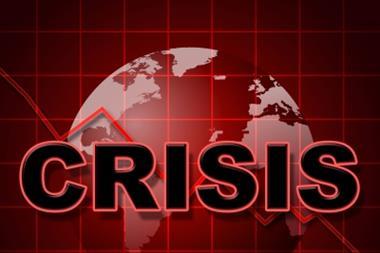Behavioural considerations may not always be foremost when dealing with a business continuity or crisis management incident, but the success of any strategy depends on ensuring they are not overlooked

The recent wave of terror attacks, particularly across Europe, has shifted the focus on how business continuity professionals tailor their approach to crises. The way people respond to incidents, which may not directly involve the workplace as the location of an incident, is still critical in ensuring minimal business interruption and limiting adverse commercial impact. While behavioural considerations in the wake of a crisis can be overlooked, they should, however, be considered in the context of business continuity and crisis management planning.
Effective communication is key in any crisis and can assist in creating the correct tone for a measured behavioural response. Equally, language and instruction are powerful tools ahead of an incident in preparing people to be able to respond quickly and efficiently (for example, an aircraft safety announcement). Communicating general advice and suggesting that people make plans for how to contact family and friends in a crisis can help opening the dialogue with employees and raising awareness of business continuity arrangements.
By engaging employees on both a personal and professional level, and in advance of any incident, firms are more likely to achieve a greater level of participation and a more balanced response.
Preparing for the worst
It’s naïve to think that because plans are in place everything will go smoothly in a crisis. Every event is different and will require business continuity teams and the people leading them to be flexible in their approach. Bringing your team(s) together to discuss what the business would do using a recent, real-world example can help to prepare people, as well as identify any immediate shortcomings or actions which need to be addressed.
It also plays to the availability heuristic whereby people tend to rely on recent examples when making decisions on how to respond or behave in a given situation. If members of your team(s) can remember a recent training session when you discussed how to respond to a recent event like the Brussels bombings, or the shootings in Munich, they are more likely to reflexively react positively in a similar situation based on their learning. The real crisis doesn’t have to be the first time.
In a crisis, managing behaviour is often one of the most underestimated challenges in working with colleagues as a business continuity team as well as with others who may feel fearful or stressed. Bringing a group together to talk about how they might feel or respond in a situation is helpful to make them behave more like a team so that they will respond as such during an emergency and to identify those who might have the right characteristics to take ownership of specific tasks.
Being open and honest with one another in a safe environment builds the trust needed to work as a team and to create a sense of shared values and purpose. This interaction needs to be a regular occurrence to build a solid foundation and, through time, will enable the group to forge stronger relationships. The key for good preparation is to stay in touch and maintain momentum.
A successful discussion with a business continuity team must be facilitated in a direct, open and curious manner; asking tough questions, playing “devil’s advocate” and reinforcing the idea of a no-blame culture all help to bring out the best in participants. It enables the team to learn about one another’s communication styles, strengths, weaknesses and expectations.
Building trust in this way means that if there is difficult news to share or tough decisions to make in a crisis, the team has already established rapport. The team have made it clear that they are “all in this together” and they understand their roles and responsibilities in a crisis. It’s also critical when reviewing lessons learnt post-incident so that discussion on shortcomings and improvements can be conducted constructively and without fear of recrimination.
More widely across the business, providing people with clear and timely communication sounds obvious, but can be a challenge to achieve during a crisis. Preparation is always helpful and pre-drafted and agreed templates can save time and energy in an emergency. Even if this is not possible, messages that are simple and clear providing factual details, immediate directions, where to go for further advice, as well as the timing of the next scheduled message can help keep a sense of calm.
In the Munich shootings, there was initial speculation that multiple sites were under attack, leading to a city-wide lock-down and public transport shutdown. Events on this scale can quickly lead to widespread panic. The Munich police force used social media during this attack to provide factual, candid and regular updates to users (including reminding people not to speculate and create unfounded rumours, which could lead to panic) bringing a much-needed voice of authority and practicality.
Also, keep in mind cultural and language differences to help keep your messages on point. In such situations, one size does not fit all and teams may need a flexible approach. Ultimately direct people to the correct behaviour in any given event and away from unhelpful emotive and panic driven responses.
Considering the “softer” behavioural skills prior to a crisis can assist in building further resilience into business continuity planning and ensure that your people feel they are valued and empowered.




















No comments yet